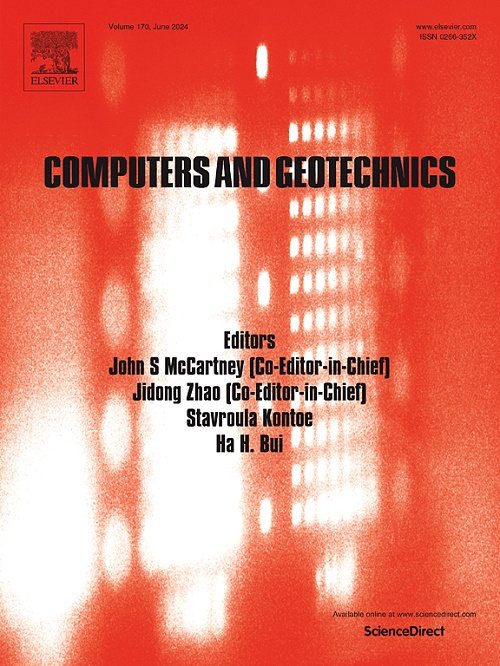Evaluating clay stiffness effects on offshore pile running with the Coupled Eulerian Lagrangian Method
IF 5.3
1区 工程技术
Q1 COMPUTER SCIENCE, INTERDISCIPLINARY APPLICATIONS
引用次数: 0
Abstract
Driven pipe piles are used extensively in coastal and offshore projects. Traditionally piles with diameters of 2–3 m were common in the offshore wind industry, however the diameter of monopiles to support a 10 MW wind turbine is more commonly 10 m. Offshore wind projects are being developed at sites with very low seabed strengths and pipe pile weights are increasing significantly. Self-weight penetration occurs when the pile is first placed on the seabed. A combination of low strength seabed conditions and increased pile self-weight leads to the risk of pile run (uncontrolled self-weight penetration) during installation at some sites. Predicting pile run risk, run velocities and penetration depths is challenging due to inherent rate effects and the large strains involved. While rapid penetration processes can be considered using both analytic methods and Large Deformation Finite Element simulations, the role of soil rigidity is seldom taken into account, despite known implications from static pile assessments. This study uses large deformation simulation with the Coupled Eulerian Lagrangian method to simulate the pile running process for five well-studied fine-grained soils with varying elastic stiffnesses. Results are compared with analytic methods, highlighting the limitations of current predictive techniques in terms of both the end tip and shaft resistance. As a corollary, a linear trend for the final penetration depth with respect to the logarithm of the soil rigidity index is incorporated in an existing analytic code based on results obtained from large deformation simulations.
求助全文
约1分钟内获得全文
求助全文
来源期刊

Computers and Geotechnics
地学-地球科学综合
CiteScore
9.10
自引率
15.10%
发文量
438
审稿时长
45 days
期刊介绍:
The use of computers is firmly established in geotechnical engineering and continues to grow rapidly in both engineering practice and academe. The development of advanced numerical techniques and constitutive modeling, in conjunction with rapid developments in computer hardware, enables problems to be tackled that were unthinkable even a few years ago. Computers and Geotechnics provides an up-to-date reference for engineers and researchers engaged in computer aided analysis and research in geotechnical engineering. The journal is intended for an expeditious dissemination of advanced computer applications across a broad range of geotechnical topics. Contributions on advances in numerical algorithms, computer implementation of new constitutive models and probabilistic methods are especially encouraged.
 求助内容:
求助内容: 应助结果提醒方式:
应助结果提醒方式:


